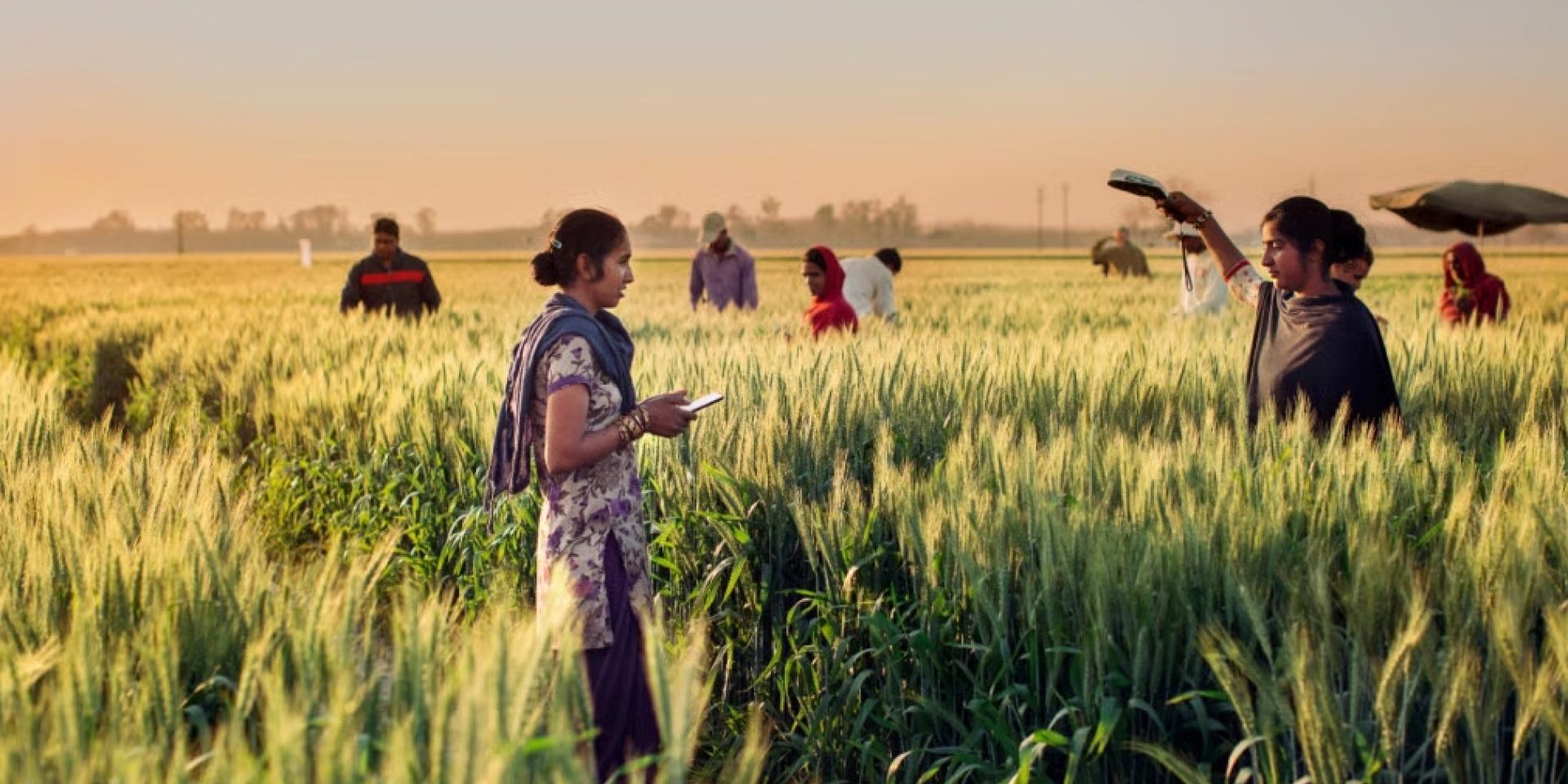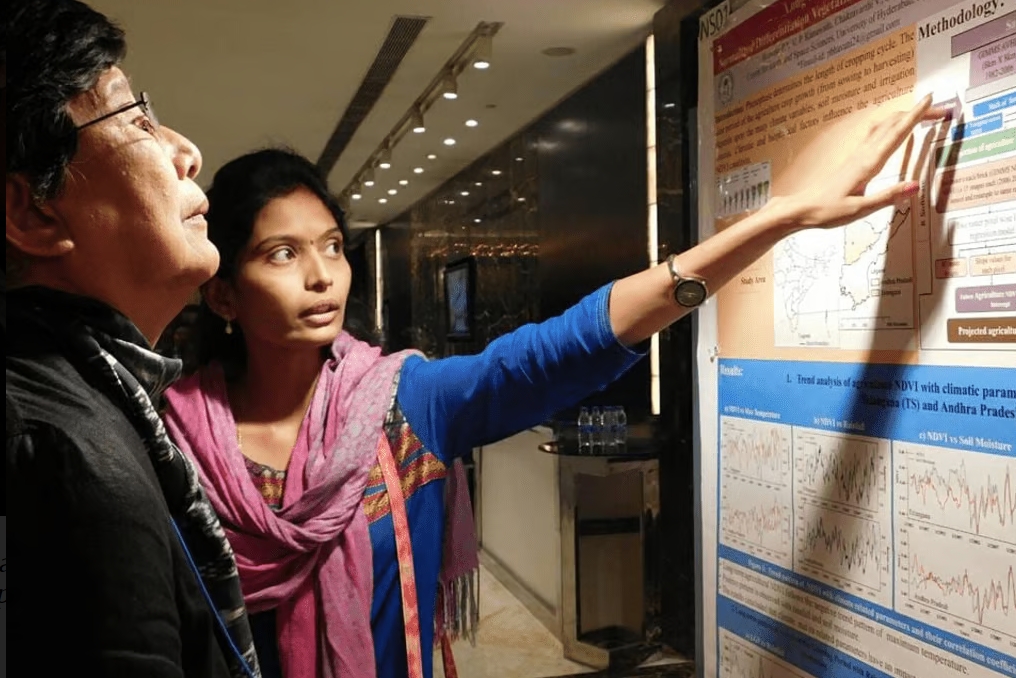International day of women and girls in science: Getting girls beyond ‘science in school’ to ‘scientific careers’
 Photo: Dalit Singh / Feed The Future
Photo: Dalit Singh / Feed The Future
This blog post was authored by Nima Chodon as part of the CGIAR GENDER Impact Platform training on telling stories about agricultural solutions that work for women. This training took place, in part, during the 2023 CGIAR GENDER conference on October 9-12, 2023, in New Delhi, India. The blog post was first published by Down To Earth, but it is re-posted as below.
Gender gap in STEM must be bridged to expand the talent pool and recognise women's potential and contribution to scientific innovations
The potential of women scientific leaders to contribute is immense, be it in agriculture, health, engineering, computer science, or space research. When the late Kalpana Chawla, an Indian-origin NASA astronaut and aerospace engineer, was asked about her journey to space, she said she felt her dream of flying in space was far-fetched. This was almost three decades ago. “Forget about space. I didn’t even know if my folks would let me go to engineering college,” said Chawla in 1997. Hailing from the Indian state of Haryana, Chawla was the first woman of Indian origin to fly to space.
STEM, which stands for science, technology, engineering, and mathematics, is traditionally associated with male-dominated fields. On International Day of Women and Girls in Science, we explore how societal norms and practices often dictate women’s participation in STEM, discouraging fewer and fewer girls and women from pursuing these fields and further perpetuating the status quo of STEM being a man’s domain.
Fewer women higher ‘up the ladder’
Despite a slow but steady increase in the number of women students studying STEM, many do not pursue a career in scientific research and innovation. The number of women employed as engineers, technologists, scientists, and researchers in higher institutes, start-ups, and research and development organizations is deficient. Further, as you go higher up, fewer and fewer positions are held by women. This is true for most fields of STEM.
Last year, a survey commissioned by a consumer brand in India revealed that despite 43 per cent of STEM graduates being women, only 14 per cent become part of the workforce — a significant drop-off after education and before entry into the workforce.
This reality is further reinforced at the world’s largest agricultural innovation network, the Consultative Group on International Agricultural Research (CGIAR). Women are a minority in most research centers of CGIAR, particularly as you climb high. The gap is glaringly stark in leadership positions, leading to far fewer mentors and role models to aspire to.
The gender disparity at all levels — in regional, national, and international centers and positions — is concerning and begs the question: Is it a larger societal or an institutional limitation?
The clash: Aspirations of young women in STEM vs traditional norms
Students of the Rural Agriculture Work Experience (RAWE) programme at Chaudhary Charan Singh Haryana Agricultural University (CCS HAU) might be leading the change to transform traditional norms. Girl students are leading from the front.
On a sunny September day in Hisar in Haryana, India, student Saloni Kamboj and two women class fellows visited farming households, going from village to village for a survey on pulse crops. Over two weeks, they surveyed farming women and men in six villages about different cultivation practices.
Saloni was one of the 210 final-year students at the university’s College of Agriculture, CCS HAU, under their RAWE curriculum and involved in a research study supported by the Cereal Systems Initiative for South Asia (CSISA), a regional agronomy development project led by CIMMYT in India, Nepal, and Bangladesh.

Student Saloni Kamboj (first from right) during a house-to-house survey to study pulse cultivation practices by farmers in Haryana. Photo: Nima Chodon
“Active participation — from design to implementation — in research programs like the CSISA-led survey has helped students, particularly women, envision a career in agri-research,” said Saloni. For the research study on pulse cultivation, students underwent training in digital survey design, data gathering, analysis, and curation.
On probing further about the experience gained and plans for a career in science, Saloni and her class fellows were not very optimistic about pursuing research careers owing to long-standing norms and family expectations. She felt that societal biases and a lack of women role models could hinder the path ahead.
Madhulika Singh, an agronomist at CIMMYT leading many research interventions, understands this well: “My parents did not favour me doing a PhD in agri-research after my master’s. They wanted me to take a teaching job and settle. It was a struggle to make them understand my passion.”
Madhulika’s educated parents believed the field to be challenging for young women with odd hours. She also said that growing up, personally, “there were fewer role models to look up to or follow for career choices in STEM.”
Bhavani Pinjarla, a geospatial analyst at CSISA, echoed similar sentiments. Her family was content with her master’s degree in satellite meteorology and weather informatics.
She pursued a PhD in geo-informatics systems (earth sciences) only after the encouragement and support of her mentor and PhD supervisor. “Despite not having many women role models, he showed me the way and motivated me to pursue my PhD,” she said.

Bhavani Pinjarla at an international conference explaining the impact of extreme weather events on agriculture using remote sensing technology. Photo: B. Pinjarla
Enabling environment to encourage young women students to thrive
With agriculture’s digital revolution, drones, artificial intelligence, and farming managed by precision science, equipping more girls and women with STEM education can transform the road ahead. Women students often complain about family members’ reservations and safety concerns regarding their participation in field-based work.
The CCS HAU university’s push to create a gender-responsive framework for their field research activities has resulted in benefits for young women’s careers beyond extra knowledge and upskilling: “It can do wonders for a student’s sense of confidence and help accelerate their decision to enter into agriculture research, post-college,” said SK Pahuja, the dean of agriculture at the university. He stressed that women were encouraged to participate in field research activities without reservations.
Given such programmes for agriculture research, senior scientist RK Malik from CSISA, who is leading the collaboration with state agriculture universities where similar research programs are being initiated, is hopeful about the future. “We did not want safety concerns to hinder female students’ participation in our crops survey,” he asserted.
In both years of research collaboration (2022 and 2023) with CCS HAU, 100 per cent of women students participated, from design to implementation of the research. Since many farmers working in agri-food systems today are women, who have long been unrecognised as farmers compared to men, more women must contribute to agricultural research and development.
Studies confirm that research by women, for women, means far greater opportunities for impact. "This process of digital data management and field exposure is very motivating and empowering. Today, I understand farmers’ practices and challenges more acutely and can articulate possible solutions,” said Isha Mehra, another student participating in the field research.
Empowering future by bridging gender gap in STEM
The demand for skilled STEM professionals has been ever-increasing, opening a wide range of jobs and careers for STEM graduates. More women in STEM will help expand the talent pool as they bring in their ingenuity, inclusivity, and diverse approaches to building new technologies and innovations.
With the growing interest of girls in STEM, their potential and participation will only increase when an enabling social and institutional environment is in place, and progress in gender equity is made. Such developments will empower girls to pursue their passion and excel at it, enabling them to become mentors and leading role models, inspiring and helping lead India’s STEM transformation for the next generation.